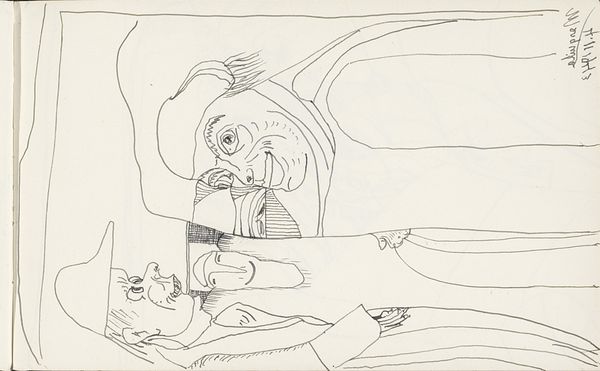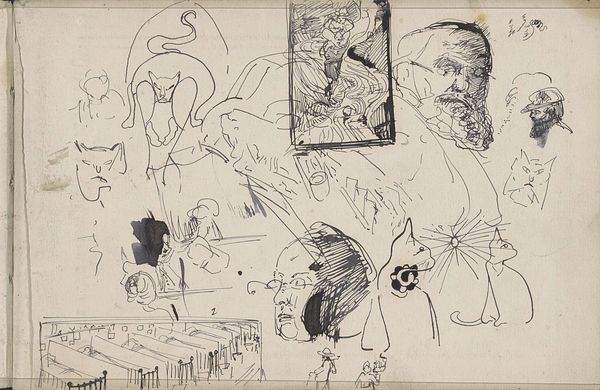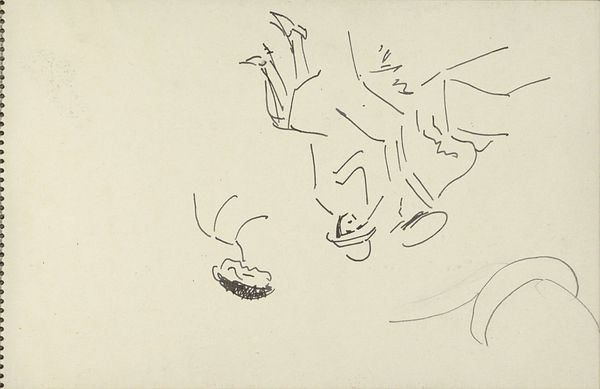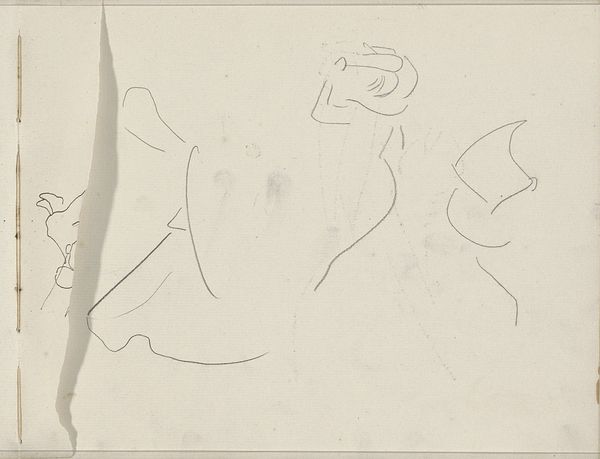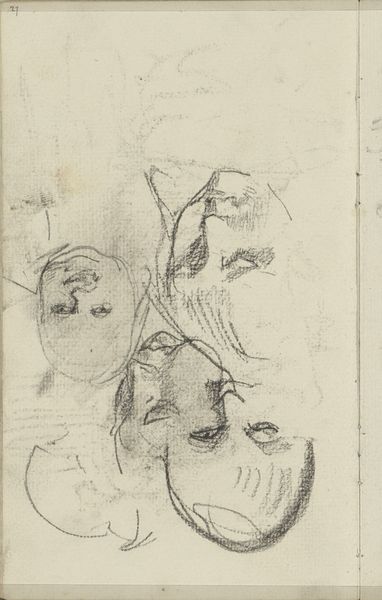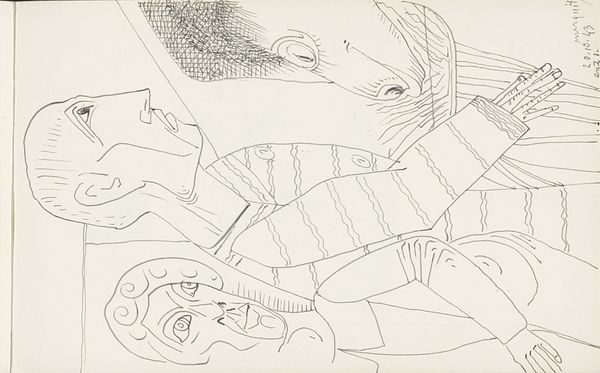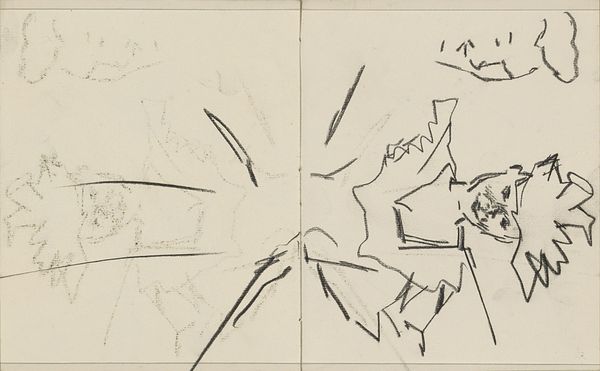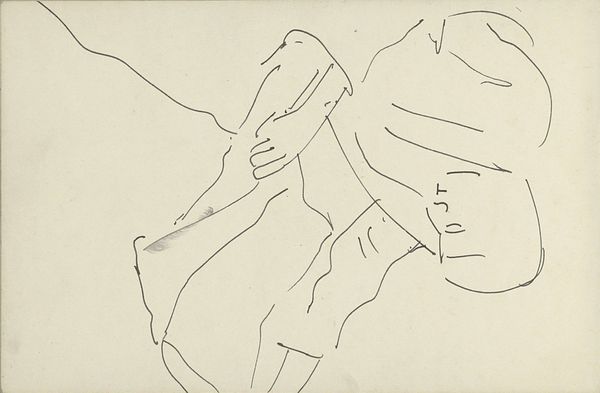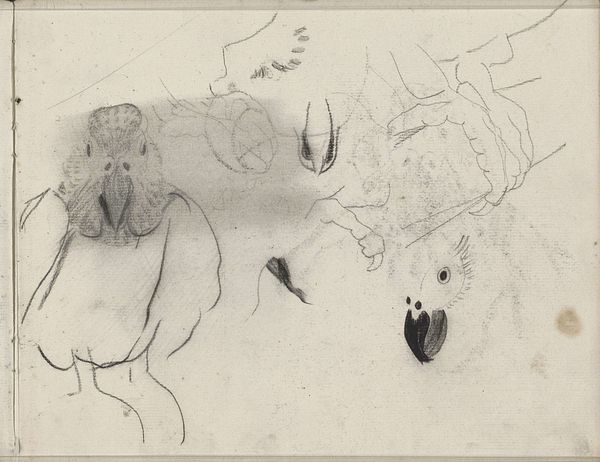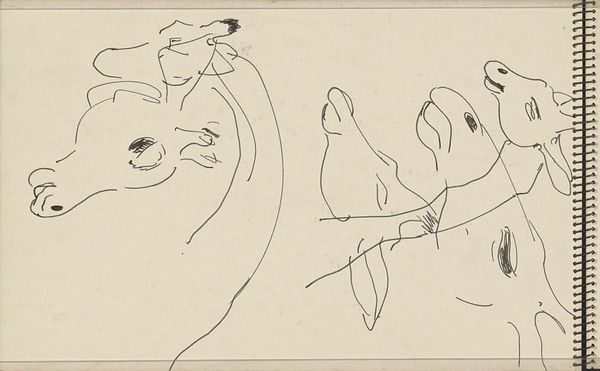
drawing, paper, ink, pen
#
portrait
#
drawing
#
comic strip sketch
#
self-portrait
#
quirky sketch
#
figuration
#
paper
#
personal sketchbook
#
ink
#
idea generation sketch
#
sketchwork
#
ink drawing experimentation
#
pen-ink sketch
#
abstraction
#
sketchbook drawing
#
pen
#
storyboard and sketchbook work
#
sketchbook art
Copyright: Rijks Museum: Open Domain
Editor: Here we have "Studieblad, onder andere met handen en een oog," a study sheet made in 1896 by Carel Adolph Lion Cachet, using pen and ink on paper. It has a sketch-like, informal feel; there is no sense of hierarchy in what he decided to sketch, hands, a face, seemingly all mixed up together on a page. How do you approach something that feels so unresolved? Curator: Indeed. Observe the composition; several seemingly unrelated forms float on the page. A hand holding an object, facial features scattered around, and a figure riding some... creature? Let's focus on the visual relationships. Notice the contrast between the detailed rendering of the hands and the more abstract representations of the other elements. This contrast establishes a visual tension and depth within the two-dimensional plane. Editor: So, you’re seeing intentional relationships being made, even if it feels unintentional? Curator: Precisely. While the subject matter is diverse, the unifying element is the artist's mark itself, the line. The confident and consistent use of line, in its varying weight and density, brings about a visual coherence that ties the image together. What compositional choices strike you most? Editor: I’m interested in the central placement of the singular eye. It is slightly out of focus, since there is also an aggregate of the rest of the features, nose, mouth, brow. It demands that I, too, observe with scrutiny, deconstructing parts from whole. Curator: Yes, the eye is both a focal point and a point of departure, encouraging us to break down the visual field. Consider the orientation of these various elements. None relate proportionally to each other or abide by laws of perspective. Do these non-existent relationships enhance or detract from your understanding? Editor: Initially, it feels random, chaotic, but when you break it down into the visual elements, like line, proportion, and focus, I see it is a self-contained world that is self-referential to only those formal elements. I can start to see order emerge, an underlying visual structure. Curator: Absolutely. Through careful attention to form, line, and composition, we have uncovered underlying intentionality. Editor: I can now see that what felt arbitrary actually adheres to a kind of formal logic.
Comments
No comments
Be the first to comment and join the conversation on the ultimate creative platform.

